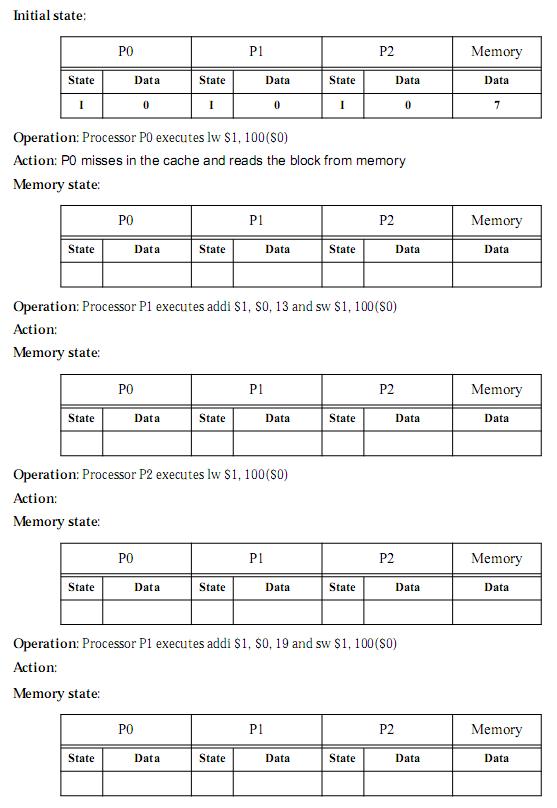|
|
|||||||||||||||||||||||||||||||||||||||||||||||||||||||
CS/ECE
552 : Introduction to Computer Architecture Due: April 30th, 2010 Assignment is to be done individually 20 points each 1. Problem 1Please read the Error Correcting Codes handout for help with this problem. Consider the example single-error-correcting code with a minimum Hamming distance of three example in the ECC1 handout. Use this code for the following questions:
2. Problem 2 (instructions updated April 21)Multiply the following 2's complement 8-bit numbers using Booth's algorithm. Show your work in detail. Verify your answer by computing A, B and the product in decimal. Multiplicand A = 1101 0101 Multiplier B = 0101 0101 3. Problem 3Divide the following positive numbers using the restoring division algorithm. Show all the steps as in Figure 3.11 on page 240 of the COD4e text book. Verify your answer by converting A and B and your result (A / B) and remainder to decimal. A = 0110 1101 B = 0110 4. Problem 4
5. Problem 5
Symmetric Multiprocessors (SMPs) are the most common computer systems that use multiple processors. Most SMPs use a shared bus to connect the processors to a (logically) shared memory, as illustrated above. Each processor has one or more writeback caches to reduce both memory latency and contention for the shared bus. A write-invalidate cache coherence protocol is used to ensure that caches maintain a coherent view of the memory state. Assume a three-state write-invalidate protocol, as discussed in class and in the textbook. The three states are:
Modified (M), also known as Read/Write (Dirty) Shared (S), also known as Read Only (Clean) Invalid (I)
Consider an SMP with the initial memory state as shown on the next page. For simplicity, the table shows only the memory block at address 100 and the block only contains one word. Consider a sequence of processor operations (time flows down the page). For each processor operation, write a one or two sentence description of the actions taken by the coherence protocol (I have completed the first one for you, as an example). Fill in the tables with the state of the caches and memory (for block 100) after each operation has completed. Recall that $0 in MIPS always contains the value zero.
|
|||||||||||||||||||||||||||||||||||||||||||||||||||||||

